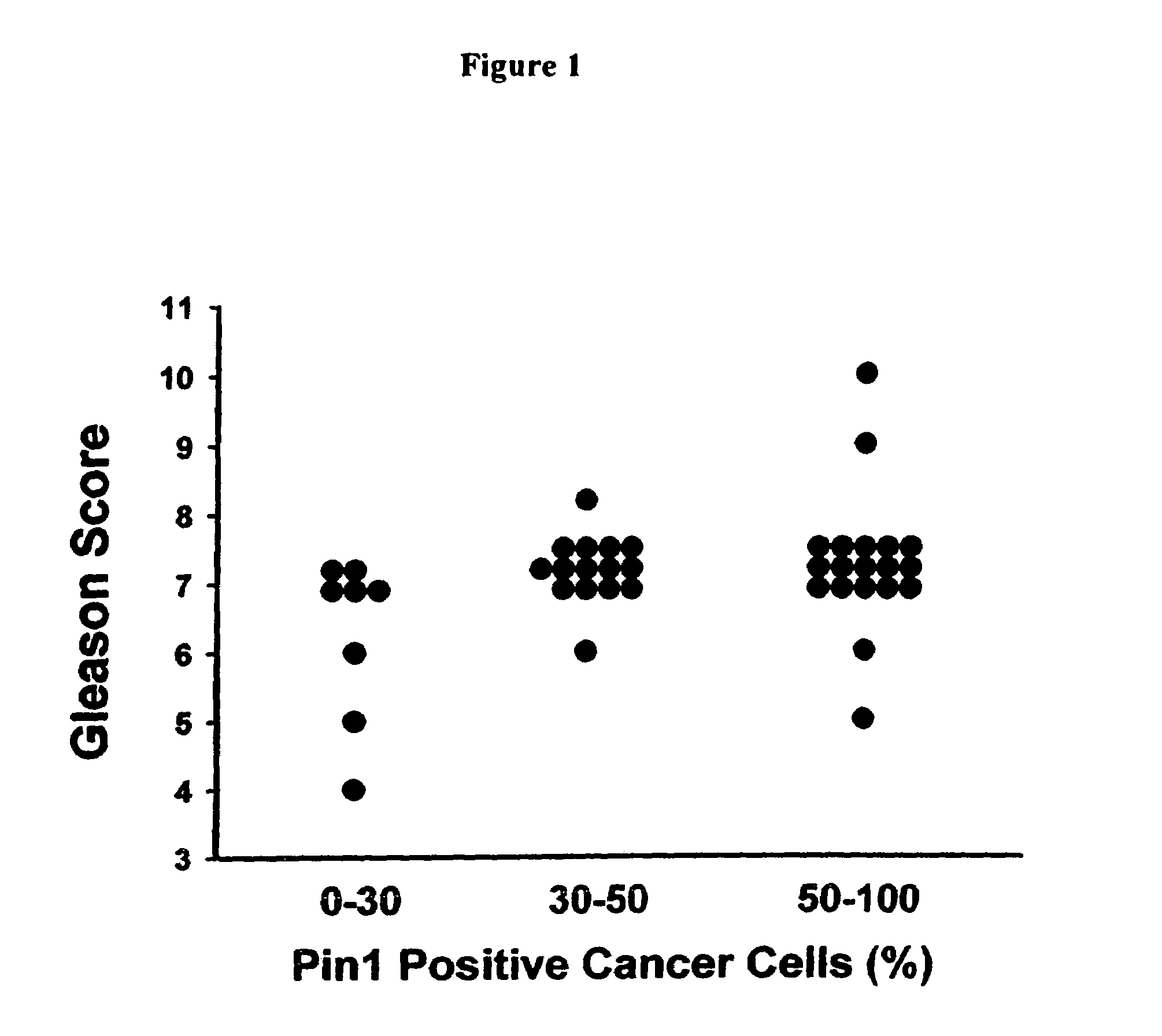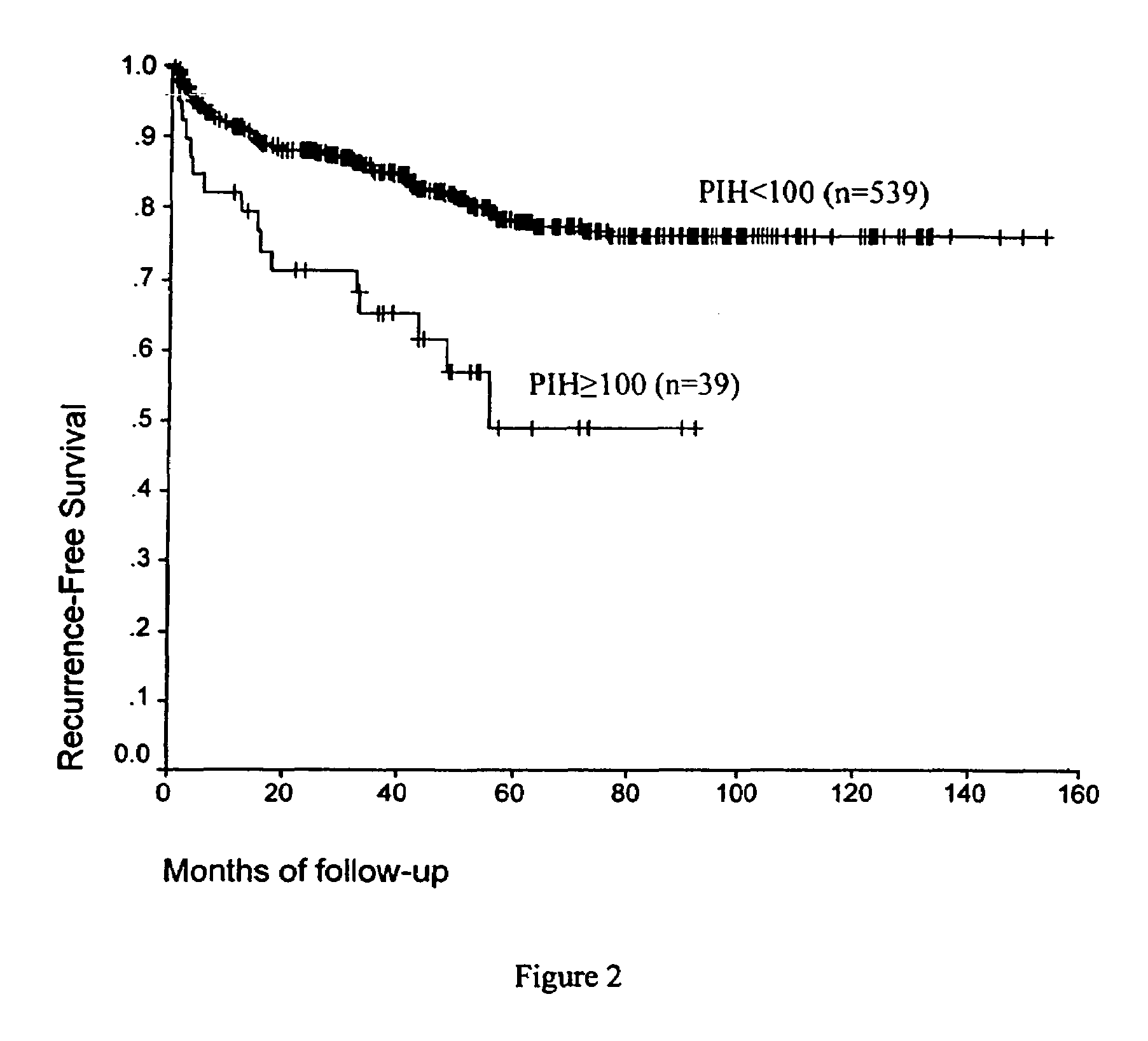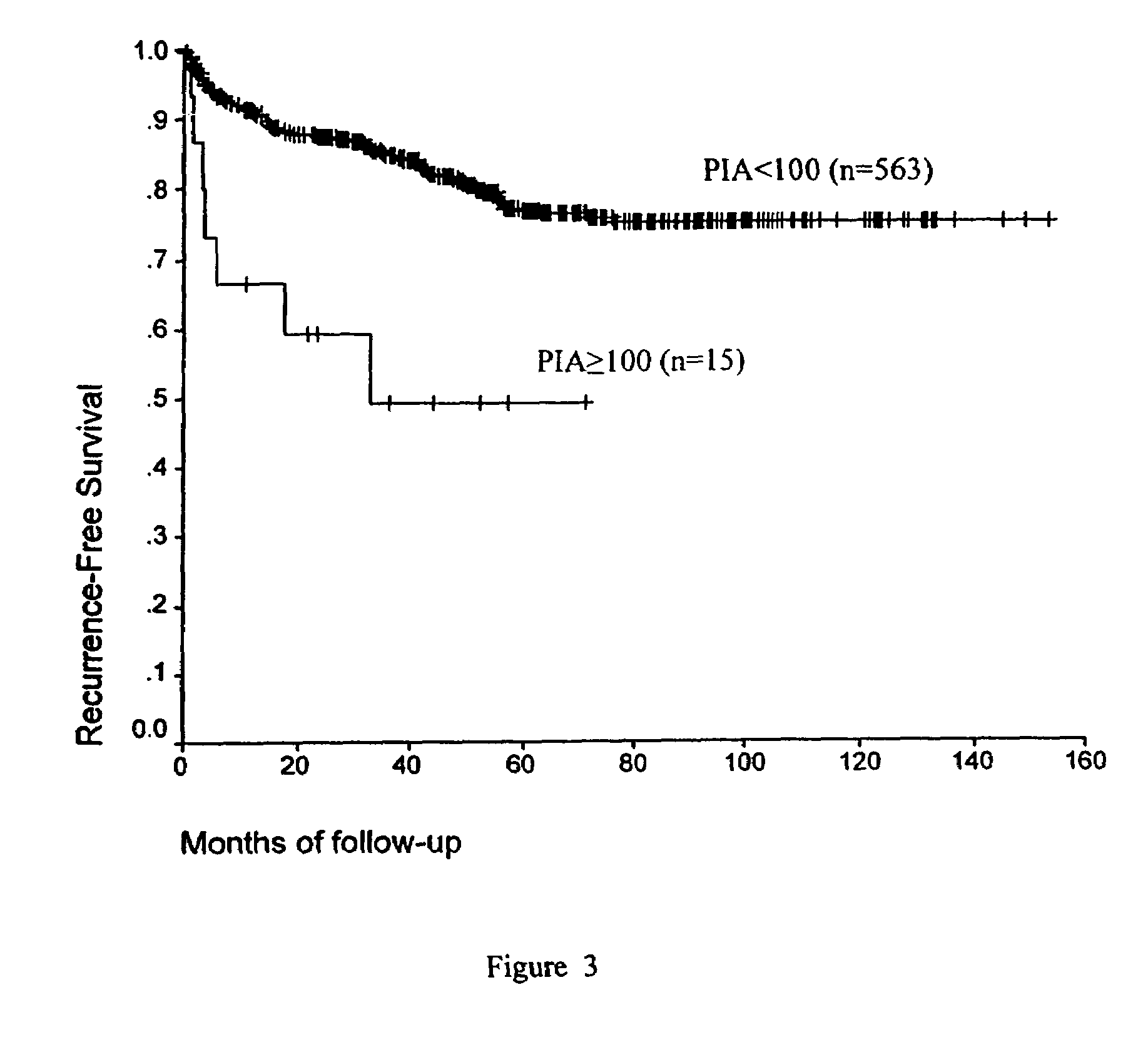Pin 1 as a marker for prostate cancer
a prostate cancer and marker technology, applied in the field of pin 1 as a marker for prostate cancer, can solve the problems of obscuring the diagnosis of pca, prostate carcinomas that are progressive in nature, and treatment normally cannot extend the life expectancy of older patients, so as to facilitate the diagnosis of prostate cancer
- Summary
- Abstract
- Description
- Claims
- Application Information
AI Technical Summary
Benefits of technology
Problems solved by technology
Method used
Image
Examples
example 1
Primary Screen for Pin1 Expression in Human Tissues
Materials and Methods
Human Biological Samples
[0125]Formalin-fixed, paraffin-embedded sections of normal human organs were obtained from Novagen (Madison, Wis.). Organs examined included: prostate, brain, pituitary gland, kidney, muscle, esophagus, stomach, small intestines, colon, liver, spleen, pancreas, thyroid, heart, lung, bladder, adipose, lymph node, uterus, ovary, adrenal, testis, tonsil and thymus.
[0126]Formalin-fixed, paraffin-embedded sections of 19 different human tumor tissues were obtained from both Novagen and Imgenix (San Diego, Calif.). Cancers examined included: prostate, stomach, breast, pancreas, lung, liver, renal, ovary, thyroid, bladder, uterine cervix, colon, esophagus, lymphoma, endometrium, head / neck, gallbladder, melanoma, parotid.
Antibody
[0127]A commercial polyclonal antibody (Ab-1) (Oncogene Research Products, MA) was employed in this study, which was generated by immunizing rabbits with recombinant human...
example 2
Use of Pin1 as a Prognostic Marker in Human Prostate Cancer
Materials and Methods
[0132]A total of 42 patients with prostatic adenocarcinoma underwent radical prostatectomy between 1988 and 1996. The clinical stage of the prostate tumor was assessed retrospectively by a review of the medical records. The grade of each neoplasm was determined using the Gleason scoring system.
Antibody
[0133]A commercially available human polyclonal Pin1 antibody (Oncogene Research Products, MA) was used in this study. The antibody was affinity-purified using CNBr-activated Sepharose 4B column (Amersham Pharmacia Biotech). The purified antibody was tested on a Western blot which contained recombinant human Pin1 protein.
Immunohistochemical Staining.
[0134]Human prostate cancer sections were stained for Pin1 using an avidin-biotin-peroxidase complex (ABC) method (Vector, Burlingame, Calif.). Formalin-fixed, paraffin-embedded 5 μm tissue sections were deparaffinized in xylenes, rehydrated in graded alcohols, ...
example 3
PIN 1 as a Prognostic Marker for Biochemical Failure
Materials and Methods
Study Subjects:
[0142]Over 3400 of patients with Benign Prostatic Hyperplasia (BPH) or cancer underwent radical prostatectomies at one of the Baylor College of Medicine affiliated institutions (The Methodist Hospital, Ben Taub Hospital, Saint Luke's Hospital and the Houston Veterans Affairs Medical Center), and provided tissues for the Baylor Prostate SPORE Tissue Bank in the Histology Core. Radical prostatectomy specimens from these patients were processed using whole mount slides according to procedures previously described by for example, Sakr, W. A., et al. (1996) Cancer 15; 78:366-778 or Ohori, M. et al. (1999) J. Urol. 161:500-4. Of these patients 1291 were operated by a single surgeon between 1983 and 1998 without any previous form of adjuvant therapy such as radiation or hormonal therapy. These are 87.9% Caucasians, 7.4% Hispanic, 3.5% African-American and 1.2% Asian or Middle Eastern. Complete demograph...
PUM
| Property | Measurement | Unit |
|---|---|---|
| concentration | aaaaa | aaaaa |
| concentration | aaaaa | aaaaa |
| concentration | aaaaa | aaaaa |
Abstract
Description
Claims
Application Information
 Login to View More
Login to View More - R&D
- Intellectual Property
- Life Sciences
- Materials
- Tech Scout
- Unparalleled Data Quality
- Higher Quality Content
- 60% Fewer Hallucinations
Browse by: Latest US Patents, China's latest patents, Technical Efficacy Thesaurus, Application Domain, Technology Topic, Popular Technical Reports.
© 2025 PatSnap. All rights reserved.Legal|Privacy policy|Modern Slavery Act Transparency Statement|Sitemap|About US| Contact US: help@patsnap.com



